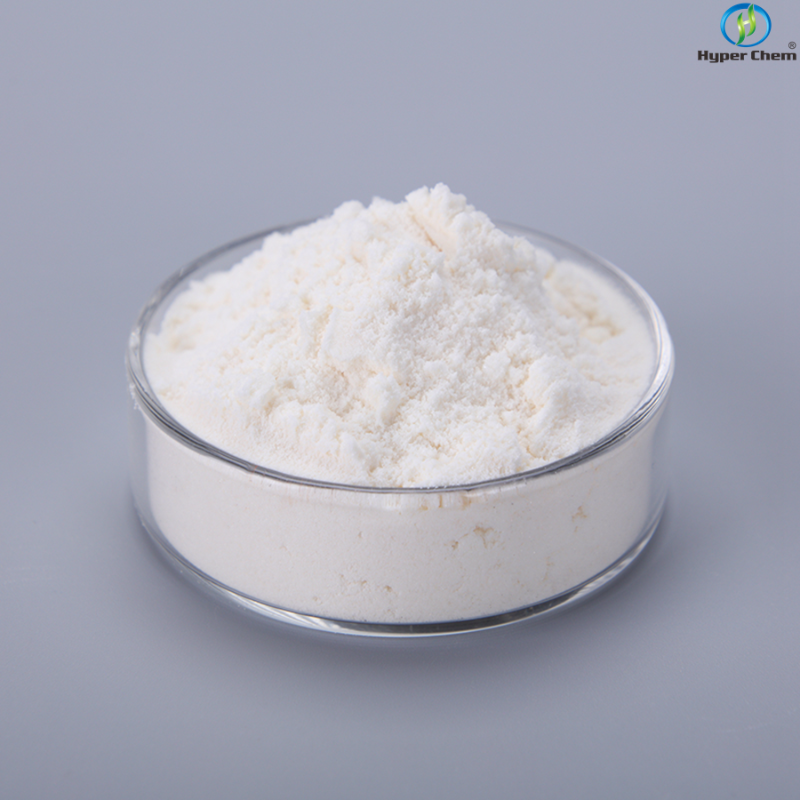-
Categories
-
Pharmaceutical Intermediates
-
Active Pharmaceutical Ingredients
-
Food Additives
- Industrial Coatings
- Agrochemicals
- Dyes and Pigments
- Surfactant
- Flavors and Fragrances
- Chemical Reagents
- Catalyst and Auxiliary
- Natural Products
- Inorganic Chemistry
-
Organic Chemistry
-
Biochemical Engineering
- Analytical Chemistry
-
Cosmetic Ingredient
- Water Treatment Chemical
-
Pharmaceutical Intermediates
Promotion
ECHEMI Mall
Wholesale
Weekly Price
Exhibition
News
-
Trade Service
The content of this article is only for medical and health professionals.
ITP disease background and treatment progress Primary immune thrombocytopenia (ITP) is a bleeding disorder caused by autoimmune dysfunction in which the number of platelets is reduced
.
Worldwide, the incidence of ITP is 2-10/100,000, and the peak incidence is in people aged 20-30 and over 60 years old 1,2
.
The clinical goal of ITP therapy is to resolve bleeding events or prevent severe bleeding by providing adequate hemostasis
.
At present, the first-line treatment drugs are mainly glucocorticoids, but some patients have hormone intolerance or contraindications
.
There are many contraindications to glucocorticoids, and clinicians should consider adverse reactions and potential comorbidities of patients before prescribing glucocorticoids, and use glucocorticoids with caution 4
.
Figure 1 Common contraindications for glucocorticoids Hormone intolerance refers to the advanced age, diabetes, hypertension, glaucoma, and ITP patients with high HBV DNA replication levels who cannot tolerate hormone therapy, and the underlying disease aggravates after the use of hormones
.
The Chinese Guidelines for the Diagnosis and Treatment of Primary Immune Thrombocytopenia in Adults (2020 Edition)1 pointed out that: (1) blood pressure and blood sugar levels should be monitored during hormone therapy, and attention should be paid to the prevention of infection and peptic ulcer; (2) advanced age, diabetes, hypertension, Glucocorticoids should be used with caution in patients with glaucoma; (3) Glucocorticoids should be used with caution in patients with high HBV-DNA replication levels
;
For the follow-up clinical treatment options for ITP patients with poor first-line hormone control, whether hormones combined with Eltrombopag can complement each other in mechanism, and the benefits of hormone-intolerant patients combined with second-line drug therapy, let us listen to them.
Expert opinion
.
Expert concept and clinical practice sharing Experts in this issue: Professor Zheng Suping, Professor Guo Zhiping, Professor Sun Jingnan, Professor Wang Xiaodong He has devoted himself to the diagnosis and treatment of lymphoma and myeloma for many years.
He has won 4 national and provincial achievement awards, and has published more than 20 papers.
Member of the International Network of Clinical Epidemiology (INCLEN), member of the International Association of Epidemiology (IEA) member is currently the vice-chairman of the Sichuan Branch of the Chinese Medical Association Clinical Epidemiology Association.
The expert concept is effective for first-line hormone therapy, but for patients who need long-term hormone dependence or are intolerant to hormones, combined with second-line drug therapy (such as TPO-RA AIDS).
What benefits will it bring? Professor Zheng Suping believes: "Combining second-line treatment drugs can reduce the side effects caused by hormones and make the long-term management of ITP patients more convenient
.
" Clinical practice sharing case 1 Basic information: gender: female Age: 32 years old Initial platelet level: 32×109/L Hormone inadequacy: Hormone intolerance Table 1 Case 1 Follow-up and efficacy evaluation records Note: Both hormones and Eltrombopag are administered once a day (qd)
.
Figure 2 The follow-up and efficacy evaluation of case 1 recorded that the initial platelet count of the patient was 32×109/L, and after 9 weeks of eltrombopag (50mg, qd) treatment, the platelet count increased to 246×109/L, reaching complete Response, that is, platelet count ≥ 100 × 109/L, and no bleeding manifestations
.
Professor Zhiping Guo, Deputy Chief Physician, Taiyuan Central Hospital, MD, Head of Hematology Ward, Taiyuan Central Hospital, Postdoctoral Fellow, Institute of Hematology, Peking University, Canada, Visiting Scholar, McMaster University, Canada Member of the Traditional Medicine Professional Committee Shanxi Province Rare Disease Medical Assistance and Evaluation Expert Presided over 1 Provincial Higher Education Science and Technology Innovation Project, and 1 Provincial Health Department Scientific and Technological Tackling Project Tender Project Specialized in allogeneic hematopoietic stem cell transplantation, stratified diagnosis and treatment of acute leukemia, genetics The first author of the genetic diagnosis of sexual bleeding disorders has published 11 papers, including 7 SCI papers (cumulative impact factor 13.
838), expert opinion For patients with poor first-line hormone control combined with eltrombopag treatment, whether the mechanism can complement each other, Professor Zhiping Guo believes: "The combination of hormone therapy with Eltrombopag can complement each other in mechanism.
Eltrombopag
is
a small-molecule non-peptide TPO receptor agonist, which can bind to the transmembrane domain of TPO receptors and activate STAT5, The AKT and ERK pathways promote the proliferation, differentiation and maturation of megakaryocytes from myeloid progenitor cells, and unlike the TPO binding site, they will not form competitive binding, and the effective rate of treating ITP can reach more than 80 %
.
Trombopag has fewer adverse reactions, and combined therapy with hormones can benefit patients more, and better balance between drug safety and treatment effect
.
"Clinical Practice Sharing Case 2 Basic Information: Gender: Female Age: 73-year-old initial platelet level: 1 × 109/L Hormone insufficiency: Hormone intolerance Table 2 Case 2 Follow-up and efficacy evaluation records Note: Eltrombopag is administered once a day (qd)
.
Figure 3 The follow-up and efficacy evaluation of case 2 recorded that the initial platelet count of the patient was 1×109/L, and after 12 weeks of eltrombopag (25mg, qd) treatment, the platelet count increased to 209×109/L, reaching complete Response, that is, platelet count ≥ 100 × 109/L after treatment, and no bleeding manifestations
.
Professor Sun Jingnan, Chief Physician, Master's Supervisor, Department of Hematology, Jilin University First Hospital, Member of the Professional Committee of Precision Medicine and Oncology MDT in China Research Hospital, Member of the Professional Committee of Hematology, China Women's Physicians Association, Youth Member of the Professional Committee of Hematology, China Women's Physicians Association Member of the Myeloma Branch of the Association Member of the Hematologist Branch of the Jilin Provincial Medical Doctor Association Member of the Standing Committee of the Hematology Professional Committee of the Jilin Provincial Health Management Society As the leader, he has undertaken 1 National Natural Science Foundation project, 1 national key research and development project sub-project, and 6 provincial and municipal projects Expert opinion is effective for first-line hormone therapy, but for patients who need to rely on hormones for a long time or are intolerant to hormones, what benefits will it bring when combined with second-line drug therapy (such as TPO-RA eltrombopag, etc.
), Professor Sun Jingnan believes: " Eltrombopag acts on TPO receptors, promotes the maturation and release of platelets, complements the immunosuppressive effect of hormones, and increases platelets more comprehensively
.
For long-term hormone-dependent patients, Eltrombopag can be combined, and hormones can be gradually reduced; For patients with hormone intolerance, hormones should be discontinued as soon as possible
.
After Eltrombopag is included in the medical insurance and the price is reduced, it can benefit more patients and is suitable for long-term platelet-raising maintenance therapy.
These patients avoid the adverse reactions caused by the use of hormones
In
addition, after a period of treatment with eltrombopag for young patients with a short course of disease and better function, a small dose of eltrombopag can maintain platelets at a safe level, and even reduce eltrombopag
.
"Clinical practice sharing case 3Basic information: Gender: Male Age: 49 years old Initial platelet level: 10×109/L Hormone incompetence: Hormone intolerance qd)
.
Figure 4 The follow-up and efficacy evaluation of case 3 recorded that the initial platelet count of the patient was 10×109/L, and after 12 weeks of eltrombopag (50mg, qd) treatment, the platelet count increased to 110×109/L, reaching complete Response, that is, platelet count ≥ 100 × 109/L, and no bleeding manifestations
.
Prof.
Wang Xiaodong The committee members won the third prize for scientific and technological progress in Sichuan Province.
What are the factors to be considered when choosing a treatment plan for patients with poor first-line hormone control? Professor Wang Xiaodong believes: "The following three aspects are mainly considered: First, safety , whether the drug has fewer side effects; second, economy, whether the patient can afford it; third, effectiveness, whether the drug used can quickly and effectively increase platelet levels
.
"Clinical Practice Sharing Case 4 Basic Information: Gender: Male Age : Initial platelet level at 30 years old: 34×109/L Hormone insufficiency: Hormone intolerance Table 4 Case 4 Follow-up and efficacy evaluation records Note: Eltrombopag is administered once a day (qd)
.
Figure 5 The follow-up and efficacy evaluation of case 4 recorded that the initial platelet count of the patient was 34×109/L, and after 4 weeks of eltrombopag (50mg, qd) treatment, the platelet count increased to 274×109/L, reaching complete Response, that is, platelet count ≥ 100 × 109/L, and no bleeding manifestations, after which platelets remain at ideal levels
.
Reference 1.
Hou Ming, Hu Yu.
Chinese Journal of Hematology, 2020(8):617-623.
2.
Frederiksen, H.
et al.
Blood.
1999;94:909-913.
3.
Provan, D.
et al.
Blood Adv 2019;3:3780-3817.
4.
Yasir M, et al.
Corticosteroid Adverse Effects.
2021 Jul 8.
In: StatPearls [Internet].
5.
Li Zeng, et al.
Complications and contraindications of long-term supraphysiological doses of glucocorticoids Symptoms.
2009.
6.
Drug Instructions for Dexamethasone and Prednisone.
MCC No.
REV22041922 is valid on 2023-04-18, and the information is expired and will be deemed invalid
.
Edit: September Typesetting: Uni Execution: Uni pokes "read the original text", we progress together







